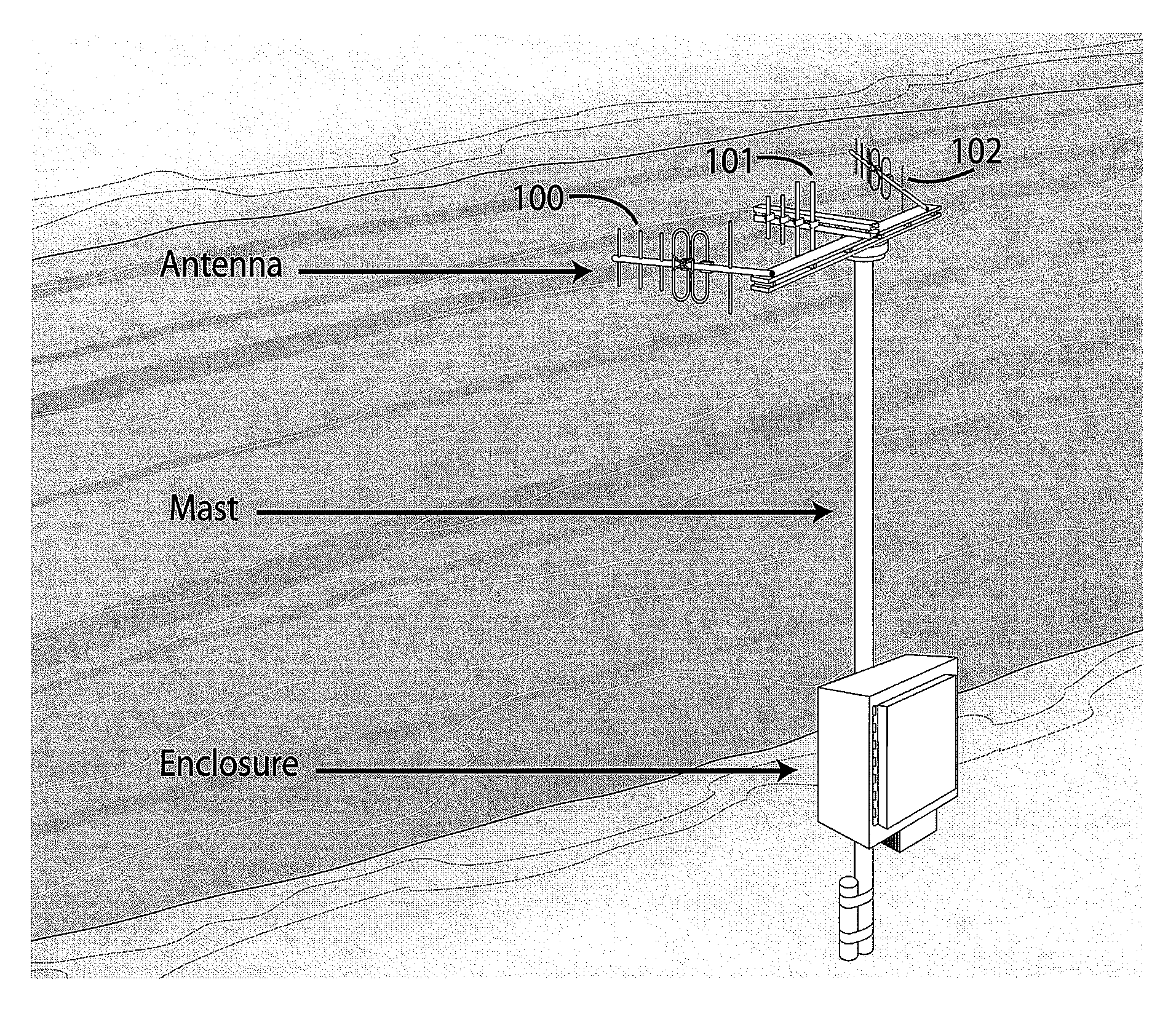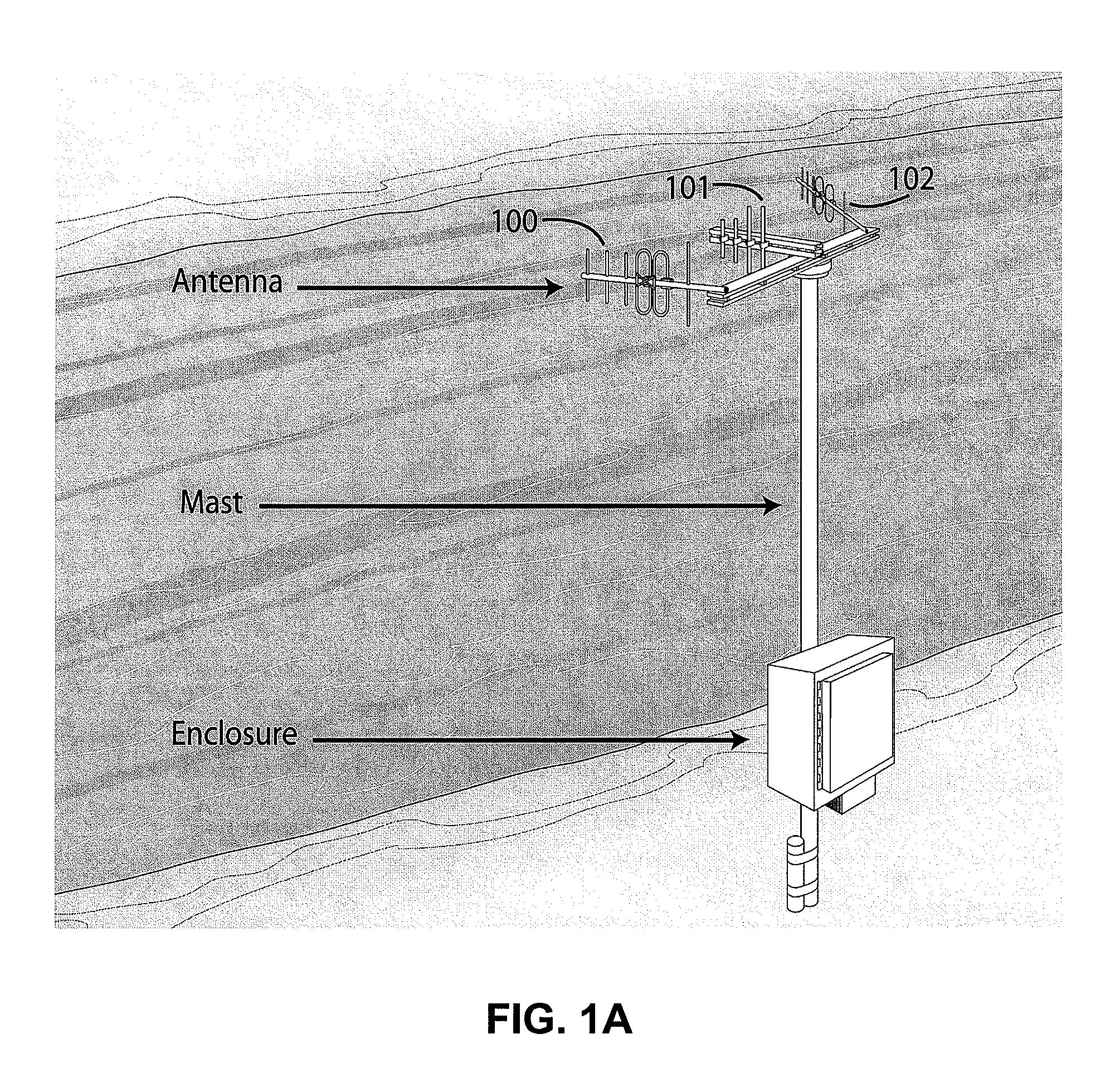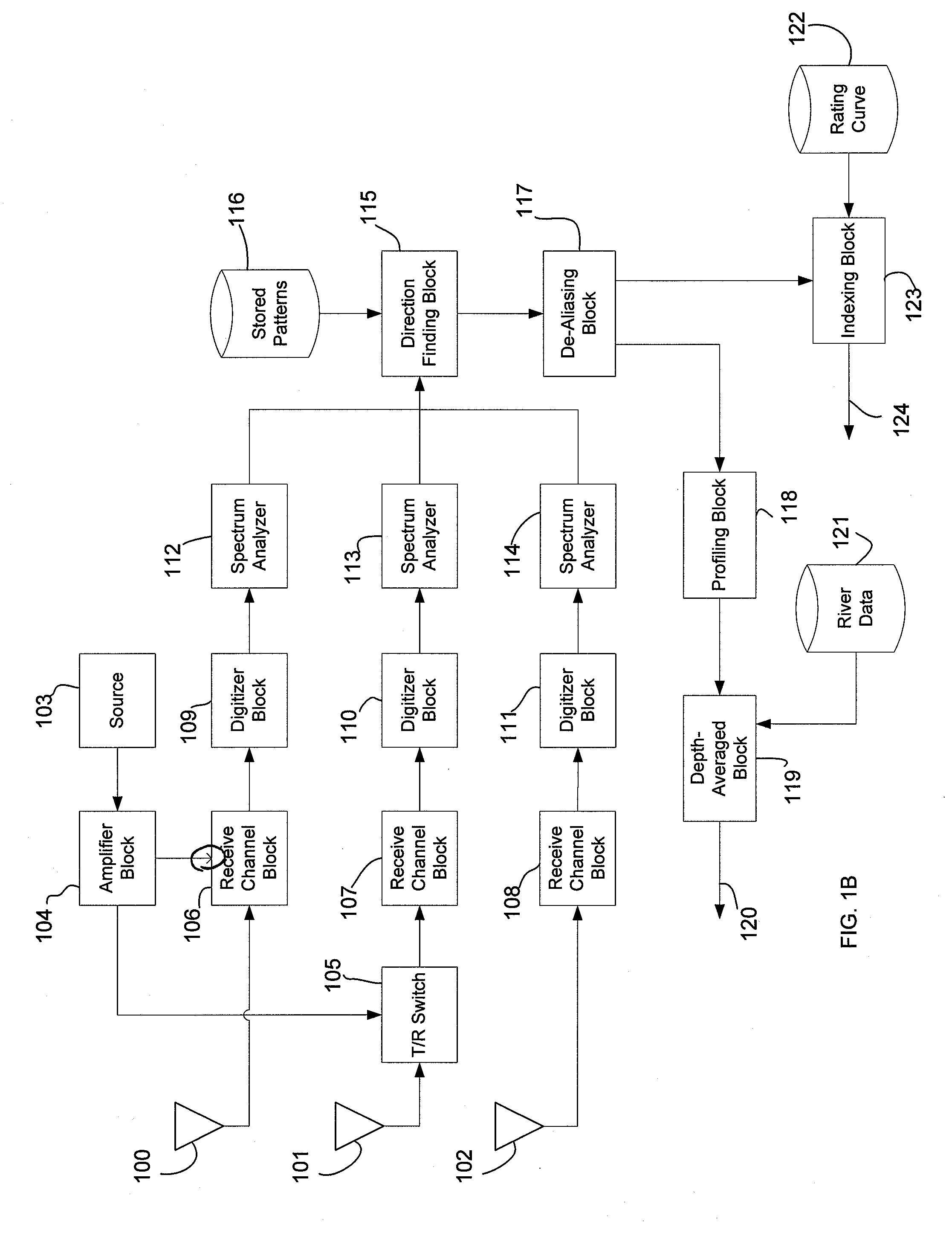Systems and methods for monitoring river flow parameters using a vhf/uhf radar station
- Summary
- Abstract
- Description
- Claims
- Application Information
AI Technical Summary
Benefits of technology
Problems solved by technology
Method used
Image
Examples
first embodiment
[0045]In a first embodiment, two artificial beams 401 and 402 are formed at a selected angle, straddling the cross river direction as shown in FIG. 4. From the two radial velocities at a given range within the two beams, the downriver and the cross river velocity may be derived trigonometrically. This downriver component is then used at that particular distance from the near bank. The process is repeated at each range, until a profile is constructed. Assumed in this process is that the flow does not vary with distance up / down-river over these spatial scales. Many beams straddling the cross river direction can be created to give redundant estimates of the downriver flow, besides the two shown, because of the large fan of radial velocity information measured by the radar. These estimates of the same information can be averaged to provide more robust profile.
second embodiment
[0046]In a second embodiment, bands 403 parallel to the banks are created as shown in FIG. 4. All of the radial velocities falling in this band are collected, and become the data vector for a least-squares fitting process. The model to be fitted may include a downriver and cross river flow; i.e., two pieces of information to be derived from many radial velocities. This becomes an over-determined linear least-squares problem that is solved by subroutine calls available in most modern commercial computational packages. Additional information may be derived, if so desired, in this least-squares fitting process by including more parameters in the model. For example, one may also allow the downriver and cross river flows to vary linearly, quadratically, etc. vs. downriver distance, in addition to the constant term implied by the non-variation with downriver distance. The additional parameters describing this more complex flow may then be derived from the radial velocity data vector withi...
PUM
 Login to View More
Login to View More Abstract
Description
Claims
Application Information
 Login to View More
Login to View More - R&D
- Intellectual Property
- Life Sciences
- Materials
- Tech Scout
- Unparalleled Data Quality
- Higher Quality Content
- 60% Fewer Hallucinations
Browse by: Latest US Patents, China's latest patents, Technical Efficacy Thesaurus, Application Domain, Technology Topic, Popular Technical Reports.
© 2025 PatSnap. All rights reserved.Legal|Privacy policy|Modern Slavery Act Transparency Statement|Sitemap|About US| Contact US: help@patsnap.com



